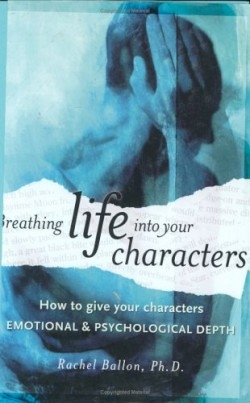Breathing Life Into Your Characters
How to Give Your Characters Emotional & Psychological Depth
The best way for writers to create exciting characters in their fiction, according to the author, is by psychoanalyzing those characters and themselves. The first glance at the title might lead one to believe that this is just another how-to tome, but in reality, it is a slender crash course in psychology, which many fiction writers of various genres, from highbrow literature to science fiction to whodunits, will find quite helpful.
Many writers, if not most, begin a new story, novel, or script with the idea of a character who will go on some literal or metaphorical journey—otherwise known as the plot. A writer might have an idea of the main character’s personality, but often tries to force the character to conform to the plot, making the story lack realism and the characters fall flat. By getting to know a character from the “inside out,” not only will a writer create a more believable, complicated character, but the character’s personality will guide the story’s action.
Ballon encourages readers to get to know their characters through the freewriting exercises (writing for fifteen minutes in a notebook without stopping) that she provides in each chapter. The exercises include creating a character’s backstory or history; knowing how a character would react in certain traumatic situations; writing about the character’s physical appearance and the way she communicates non-verbally; exploring a character’s addictive behaviors and the reasons for them; and acknowledging any mental illness or personality disorders in characters. Since fictional characters come from the writer who creates them, each exercise starts with the readers analyzing themselves in the same way that they analyze their characters.
Ballon is the author of two previous non-fiction books, Blueprint for Writing and The Writer’s Sourcebook. She has taught writing workshops at the UCLA Writer’s Program and the USC School of Cinema and Television. She is also a psychoanalyst who specializes in writers and works as a writing consultant. With each definition of a psychological or writing term, she provides a helpful, accessible example either of her own or from literature. For instance, in the discussion of depression, excerpts or descriptions from Sylvia Plath’s The Bell Jar and Michael Cunningham’s The Hours serve to illustrate the point.
Occasionally, the freewriting exercises can be a little vague on direction, but overall, this excellent advice book is a wonderful source for writers who need a fresh perspective on creating more complex characters, from heroes to villains.
Reviewed by
Olivia Boler
Disclosure: This article is not an endorsement, but a review. The publisher of this book provided free copies of the book to have their book reviewed by a professional reviewer. No fee was paid by the publisher for this review. Foreword Reviews only recommends books that we love. Foreword Magazine, Inc. is disclosing this in accordance with the Federal Trade Commission’s 16 CFR, Part 255.

